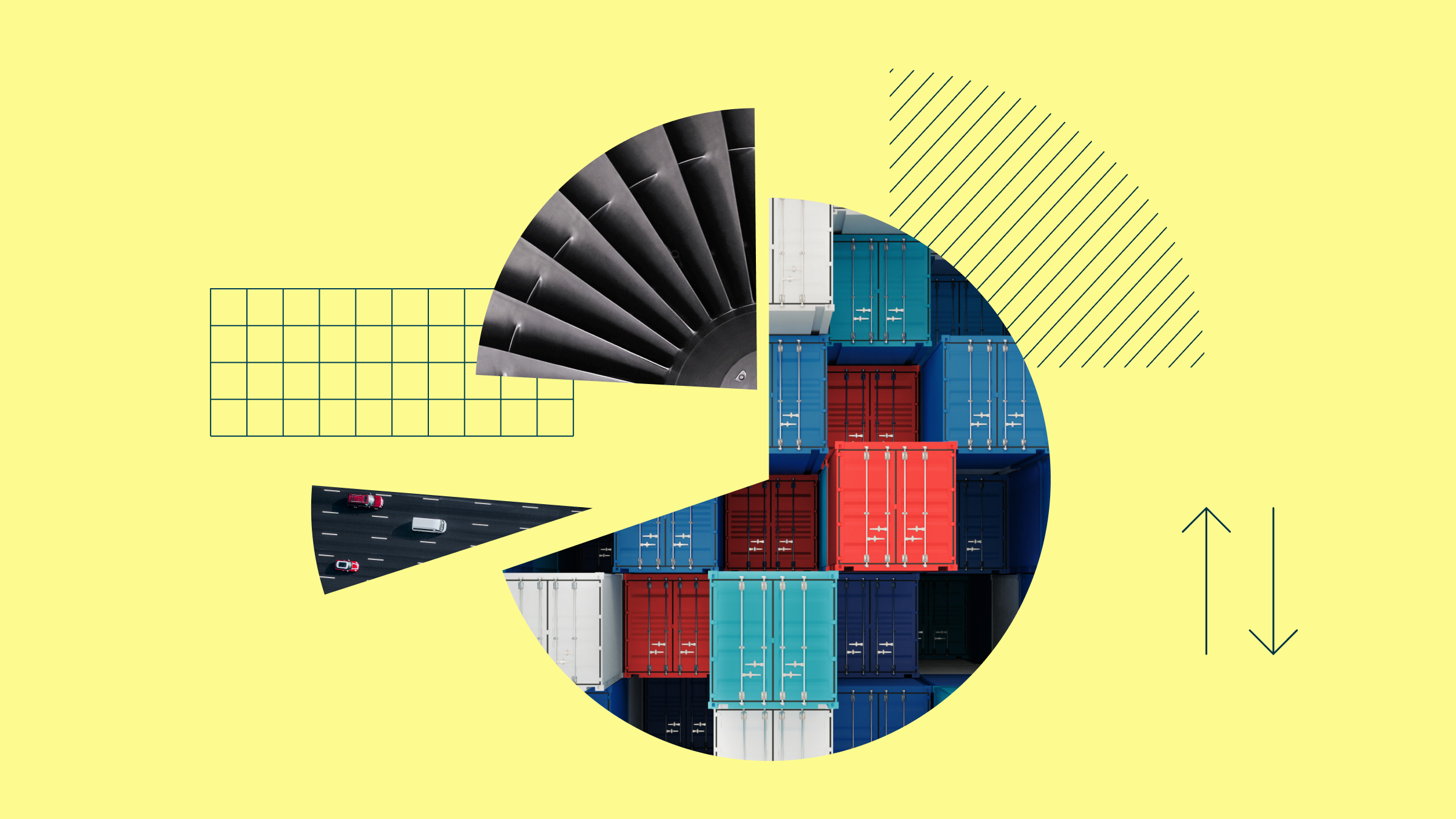Rolle im Portfolio
The db x-trackers S&P 500 UCITS ETF is best suited as a core building block for a portfolio, providing broad exposure to many of the largest companies in the world’s biggest economy. With 500 large cap constituents, the S&P 500 Index covers three-quarters of the U.S. equity market and is well diversified by sector and security. Increasingly, the underlying companies themselves are becoming geographically diversified, getting more and more of their revenue from outside the United States. Over the last 20 years, the S&P 500 has exhibited annualised volatility of 15.2%, versus 15.9% for the MSCI Europe and 21.0% for the MSCI Emerging Markets. During the same period, it has shown a correlation to the European index (in local currency) of 84%, and to the emerging markets index (again, as measured in local currency) of 68%. Over the shorter term, however, some of that diversification benefit seems to have diminished: the corresponding 5-year correlations are 92% and 86%. U.S. equities comprise a large portion of many global equity indices, for example they made up 53.8% of the MSCI World Index at the end of March 2013. So combining this fund with a global product might result in an overweight to U.S. equities. It would therefore work better in conjunction with an EAFE or World ex-U.S. exposure. The fund does not distribute any of the dividends paid by its underlying constituents, instead reinvesting them immediately to maintain full exposure. Therefore, this product may not suit an investor looking for regular investment income.
Fundamentale Analyse
Though its fortunes have been overshadowed somewhat by the events unfolding in Europe, the United States has continued to show lacklustre progress towards economic recovery. The unemployment rate, while down from its highs, is still stubbornly lofty at 7.7%. GDP advanced by 2.2% in 2012, up from 1.8% in 2011 but still below the roughly 3% pace it has averaged over the last 30 years. One recent bright spot is that the long-anticipated recovery in U.S. housing seems to be taking hold. The S&P/Case Shiller Home Price Index 20-city composite was up 8.1% for the 12 months through the end of January 2013, although it is still down roughly 30% from its 2006 peak. Thanks to a last-minute deal reached by U.S. politicians, much of the immediate impact of the “fiscal cliff” was avoided, although payroll taxes did rise on December 31st, 2012. Still, the impact appears to have been muted, as consumer spending numbers for January and February were stronger than expected. More recently, spending cuts automatically triggered as part of a sequestration began to take hold in March 2013, and could put a significant dent in this year’s economic output. To pick up the stimulus slack, monetary policy has been extremely accommodative since the global financial crisis. The Federal Reserve has lowered short term interest rates to near zero, and tied its policy objectives to job growth by indicating that rates will remain low until the unemployment rate falls to 6.5%. The S&P 500 has produced an annualised total return of 8.5% over the last 20 years. Like most equity exposures, the index took a drubbing during the 2007-2008 financial crisis, but it has rallied considerably since then as successive rounds of quantitative easing have encouraged investors to move into risky assets. Around the time of writing the S&P 500 was setting new all-time highs. After bottoming out at 9.4 in February 2009, the price-to-earnings ratio of the S&P 500 had climbed to 16.6 by the end of March 2013, which was slightly above its 10-year average of 16.4.
Indexkonstruktion
The S&P 500 Index is a free float capitalisation-weighted portfolio of 500 large, United States domiciled stocks. To join the index, constituents must meet minimum liquidity requirements, must have a public float greater than 50% of the value of their stock, and must have market capitalisations above $4 billion. A committee maintains the index and meets regularly to review its underlying components, making changes on an as-needed basis. If a constituent falls out of line with any of the index’s entrance criteria, the committee can use its discretion to keep it in the index if the change is deemed temporary. New entrants to the index are also meant to contribute to its overall sector balance, as measured using the Global Industry Classification Standards (GICS®). As of the end of March 2013 the most significant sector exposure were information technology at a 18.0% weight, financials at 15.9%, health care at 12.5%, and consumer staples, consumer discretionary, industrials, and energy all with weights between 10.1% and 11.6%. Portfolio concentration is limited, with the top ten stocks in the index making up just 18.5% of its total. Top constituents were Apple, Exxon Mobil, and General Electric, at respective weights of 2.97%, 2.89%, and 1.72%. The median market capitalisation of constituents was $14.1 billion.
Fondskonstruktion
The fund employs synthetic replication to provide exposure to the underlying benchmark, entering a funded swap with parent company Deutsche Bank. Investors’ cash is transferred to Deutsche Bank, which then puts collateral in a segregated account opened in the name of Deutsche Bank and pledged to the fund. The collateral is marked to market daily and its composition can change every day. At the time of writing, the collateral consists almost entirely of equities from a variety of sectors. Its total value was equivalent to 109.87% of the fund’s net asset value. The fund’s prospectus states that, in compliance with UCITS III rules, it cannot have net counterparty exposure exceeding 10% of the fund’s NAV, implying that the collateral must at a minimum be valued at 90% of the fund’s net assets. Collateral will be held and managed by Bank of New York Mellon (Luxembourg). In the case of an enforcement event—which could be any of a number of a wide range of actual and/or potential default or termination events on the part of Deutsche Bank—the fund will be entitled by Luxembourg law at that time to enforce the pledge and sell the collateral assets without giving prior notice to Deutsche Bank. Under the terms of the swap, the counterparty agrees to provide the fund with exposure to the total return of the underlying index, net of any associated taxes, costs, or fees, in exchange for the return on the substitute basket. The return from the swap assumes that all dividends paid by the underlying stocks are reinvested in the index. This fund does not pay out any dividend distributions. As of the date of writing, the fund had roughly $1.1 billion in assets.
Gebühren
The fund’s total expense ratio is 0.20%. Other costs potentially borne by the unitholder but not included in the total expense ratio include swap fees, and bid-ask spreads and brokerage fees when buy and sell orders are placed for ETF shares.
Alternativen
Beyond the S&P 500, in Europe, there are a number of index alternatives for the U.S. equity market, including the Dow Jones Industrial Average, which is price weighted and more concentrated in its holdings, and the technology-heavy NASDAQ. Many providers offer ETFs tracking the S&P 500 Index, including ComStage, HSBC, iShares, Lyxor, Source, Amundi, SPDR, CS, EasyETF, Vanguard, and UBS. Of these, iShares S&P 500 is by far the biggest, with assets of $11.8 billion, followed by the db x-trackers, HSBC, Source, and CS funds, which each have assets of between $800 and $1.1 billion. The products with the lowest TERs are the HSBC fund and the Vanguard fund, each with a TER of 0.09%. For alternatives to market capitalisation weighted exposure to U.S. equities, there are also Ossiam ETF US Minimum Variance NR, db x-trackers S&P 500 Equal Weight, and PowerShares Dynamic US Market Fund.
In Asia, in addition to this ETF (K6K, listed in Singapore; also listed in various exchanges in Europe, TER of 0.20%), there are 2 other ETFs tracking the S&P 500. The other 2 are: SPDR S&P 500 (S27, cross-listing of SPY in Singapore, TER of 0.09%) and iShares Core S&P 500 ETF (I17, cross-listing of IVV in Singapore, TER of 0.07%).

















